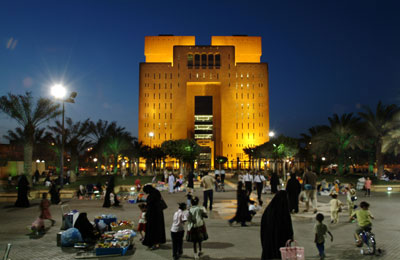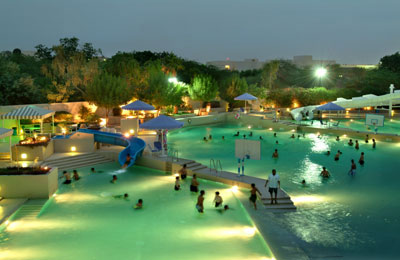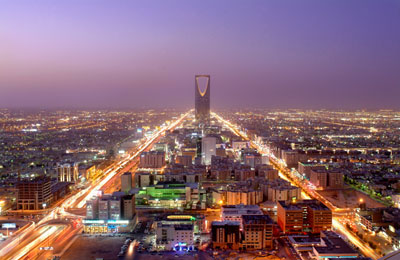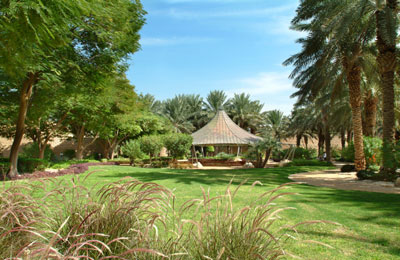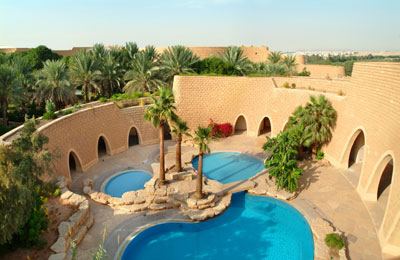ArRiyadh is the plural of the Arabic word 'Rawdah', which means 'Garden' or 'Meadow'. The name has been derived from the nature of the low location where flood water collects, and green grasses cover the soil with fragrance of roses. The city name comes from here. The city has risen on the ruins of Hajar Al Yamamah ancient City.
The history of that city goes back to the time of Tasm and Jadees tribes where they have erected towers and palaces. It is said that the ruins were seen during the fourth Hegira century. The area was then settled by Hanifa tribes who have scattered through the Valley where the city has had flourished and was a market place for Arabs.
Yagout has stated in his book "Lexicon of Towns" that the name Hajar goes back to Obeid Al Hanafi when he had put thirty palaces and gardens under his property and called them Hajar. The place was formerly called Yamamah.
With the advent of Islam in Hijaz and its spread in Arab Peninsula, tribes have come from Yamamah to the Prophet (May Allah's Prayers be upon Him)) to pay Homage. Bani Hanifa had embraced Islam with other tribes but had again deflected after the death of the Prophet (May peace and blessings of Allah be upon Him) with other Arab tribes. Abu Baker, the companion of the Prophet (May peace and blessings of Allah Almighty be upon Him) has waged a war against them until they surrendered and have entranced Islam once again.
At the time of the Caliphs, Hajar was the leader of Yamamah region with the movement of the Islamic caliphate outside the Arab Peninsula and the emergence of rich Islamic regions the importance of Yamamah towns and villages started to decline. As a result, the political and security affairs were mixed up and that has had an impact on the stability, growth and development of Yamamah. During the eighth century ArRiyadh has come out on the remaining ruins of Hajar and the surrounding villages.
In 1233H, Ad’Diriyah was destroyed by Ibrahim Basha the Governor of Egypt and the first Saudi state was devastated. The Ottoman state was scared by the reform call set up by the family of Saud. The Ottoman state has become a breeding ground for heresy superstitions and perversity for that reason a military conflict between the Ottoman state, which was superior, and the Saudi State.
The result was the occupation of Hijaz and Najd. But the Saudi state have recovered and regained power under the leadership of Imam Turki bin Abdullah in 1240H who has made ArRiyadh the capital of his state after the destruction of Ad’Diriyah. Imam Turki has built the city mosque and governorate palace in addition to a fortress surrounding the city.
From that time ArRiyadh has become the seat of the second Saudi State and then at modern Saudi State after being captured by Imam Abdulaziz bin Abdulrehman Al Faisal. ArRiyadh has become one of capitals characterized by social, political and economic influence in recent time. This impact is not limited to the local region but extends to the international arena.
Today ArRiyadh is considered of the fast growing cities. In less than half a century, its area has expanded for more than hundred times. The city population has increased from 20,000 to almost four and a half millions. The city is still growing and developing under the leadership of faithful men who spare no effort for making the city a minaret for religion welfare and civilization.
source: www.arriyadh.com
